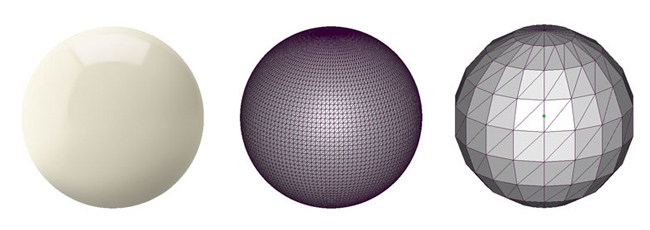If your 3D model is considered “too rough” to print, it was probably exported with the wrong tolerance, resulting in a low-resolution file. Low-resolution means that the triangles in your STL file are big and the surface of your print will not be smooth.
For 3D printing, the most common file format is STL, which stands for standard triangle language. It means that your design will be translated into triangles in a 3D space. The triangulation (or poly count) of a surface will cause faceting of the 3D model
It’s important to be aware that a low-resolution export will never allow us to provide you with a good 3D print. If the STL file is rough and faceted the 3D printed model will also be rough and faceted.
In most 3D modeling software, when exporting a file (for instance to STL) you will be asked to define the tolerance for the export. This tolerance is defined as the maximum distance between the original shape and the STL mesh you are exporting. We advise choosing 0.01 mm for a good export. Exporting with a tolerance smaller than 0.01 mm does not make sense because most 3D printers cannot print at this level of detail and your file will be unnecessarily large.

For example, the globe on the left is in its native file format from a 3D modeling software; the one in the middle is a high-resolution STL export; and the one on the right is a low-resolution STL export.